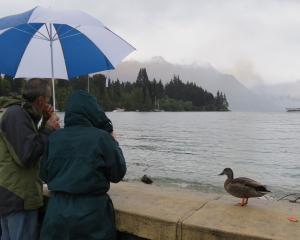
Sunday’s GPS-guided grid search, organised by the Southern Lakes branch of the New Zealand Deerstalkers Association, was hampered by recent slips and fallen trees, which meant only about one-quarter of the 1.5sq km area could be covered.
Branch vice-president David Rider said full results would not be released until the search was completed on December 4 and 5, but the 14 volunteers were surprised to find "plenty" of 1080 baits in various stages of disintegration.
The baits appeared to be "taking far longer to degrade than we were initially advised", Mr Rider said.
That observation had been backed up by discussions with other trampers.
"There are still a lot of areas within the drop [zone] that have baits in reasonable conditions."
One purpose of the search was to check the effectiveness of deer repellent used in the 1080-laced cereal baits dropped over the area on October 21.
Mr Rider said a live whitetail doe was seen as well as plenty of fresh deer sign.
Bird life was "not abundant", although three kaka were spotted.
He was keen to hear from anyone who wanted to help when the search resumed on the weekend of December 3-4.
Comments
Well done the Southern Lakes deerstalkers for doing an organised search of 150 hectares to observe what happens after a 1080 drop. I'm waiting with interest to hear the final tally, so far standing at a few dead rats, when they've searched the remaining 3/4 of their area.
But there's one odd comment by Mr Rider. He said they found "plenty" of 1080 baits in various stages of disintegration and that the baits appeared to be "taking far longer to degrade than we were initially advised", Mr Rider said.
I wonder if there is a confusion between the bait and the poison? The poison washes out of the bait after a day or two of rain. It dilutes to undetectability in streams. In springtime temperatures, it is broken down (biodegraded) by soil bacteria in soil or water within a week or two. The baits the searchers are seeing are just green dyed cereal - no need to worry about them.











